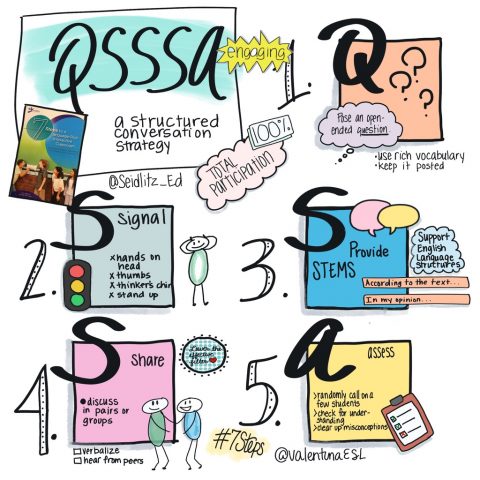Reminders
Wednesday, October 28th, 3-5pm: New ELL Teacher Check-in: Contact Michelle for Teams Invite
Monday, November 2nd, 3:30-5pm: ELL Book Club: Big Ideas for Expanding Minds by Jim Cummins and Margaret Early-Chapter 4.
Tuesday, November 17th, 1-3pm: Elementary ELL meeting: We will welcome speakers from the Burnaby Public Library. Zoom link will be sent out closer to the date.
PSA-Day Recaps
Say It Like A Scholar! Techniques and Tools to Flex Academic Language Muscles in the ELL Classroom and Providing Actionable Feedback to Advance ELL Oral Language Proficiency
Dr. Kate Kinsella and Associates
BCTESOL Annual Conference
Treating our English Language Learners as scholars will elevate the language of our EL learners. This includes effective and thoughtful usage of academic language in our interactions with students and in our planning for instruction. Dr. Kinsella shared strategies and reference materials she had developed over her career as an ELL teacher and researcher. During, her presentation, Dr. Kinsella demonstrated how common teaching practices such as “think, pair, share” and writing frames need to include more scaffolding and academic vocabulary in order to promote more engagement and growth in EL learners. A video of the two sessions will be posted and she shared that her new book Scholarly Interactions: Tools and Techniques to Engage Academic Learners, K-12 (ISBN:978-1-5443-2546-0) will be available in August 2021.
Teacher Collaboration for All Seasons
Tan Huyhn with Caroline Davidson, and Sherry Liptak
If you’ve ever experienced Tan through his blog, podcast, or social media, you know how engaging he is and Friday was no exception. The big takeaway I had was that co-planning IS co-teaching.
While Tan gave some templates to co-teach, most of the day was focused on co-planning. In this world, time is a valuable commodity. We can use it more effectively with co-planning strategies. The metaphor Tan used was of a vase. Inside the vase, you need to put a big rock, smaller pebbles, and sand. How will you get them all in? First, you should add the rock, which is the big idea of the lesson or unit. Then, add the pebbles, they are the methods and language needed. Finally, you add the sand which is the smaller details. If teachers did the big idea synchronously each unit, they could plan the others asynchronously in their own time constraints. As Tan said, “One co-planning session can set you up for a month”.
Every Teacher is a Language Teacher
Incorporating All Areas of Language into a Lesson
One attainable goal for lesson planning is to have students speak, listen, read, and write in English every class. This increases language opportunities but also student engagement. Here is an example outline for how a class/group could do this daily in any subject or content area.
COLO: First, at the beginning of the lesson, read the content and language objectives for the group so they can hear your pronunciation and intonation. Then, as a group, co-read them. I like to annotate them as I go to explicitly teach the academic tier II vocabulary. This is usefully for all students but especially rewarding for students who are working on increasing their English literacy skills.
Big idea: Have one question on the board that you want students to be able to answer by the end of the lesson with a sentence starter (or differentiated ones) that students will write at the end of class.
QSSSA: Use QSSSA, (Question, Signal, Stem, Share, Assess). This method is excellent for getting students to talk to each other by lowering the affective filter or the stress of speaking a language. Check out Carol Salva’s video demonstration if you’ve never used this in your classes. I promise you it will change your classroom’s whole dynamic: https://youtu.be/boYaz_TFSyU
Exit Ticket: Have students answer your question from the beginning of the lesson in writing. You can also extend this into a class brainstorm and a writing lesson.

Leave a Reply